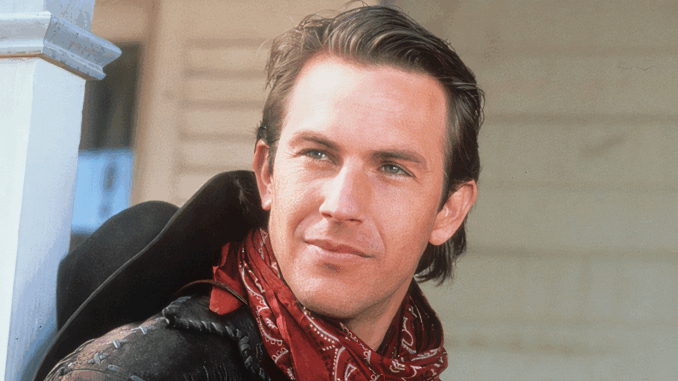
A High-Stakes Dive Into Disaster
Remember Waterworld? That big-budget, post-apocalyptic adventure with Kevin Costner sailing across a flooded Earth? Released in 1995, it was supposed to make waves. Instead, it almost drowned Universal Pictures in debt. Now, 30 years later, it’s time to look back at what really went wrong—and why people are still talking about it today.
The Hype Before the Storm
Before its release, Waterworld was touted as “Mad Max on water.” It had everything going for it: a bankable star, cutting-edge stunts, and the largest budget Hollywood had ever seen at the time. The marketing machine promised a sci-fi epic for the ages.
So what could possibly go wrong?
The Budget Ballooned—Fast
From $100 Million to $175 Million
Originally greenlit at around $100 million, production costs spiraled out of control. Filming on the open sea turned into a logistical nightmare. Set pieces sank, equipment was lost, and weather delays chewed up cash like a school of piranhas.
The Floating Set Was Literally Sinking
The film’s massive floating atoll, built in Hawaii, sank during a storm. No joke. The crew had to scramble to rebuild, wasting weeks—and millions.
Creative Clashes Behind the Scenes
Costner vs. Reynolds: Director Swap Drama
Director Kevin Reynolds eventually walked off the project, allegedly due to clashes with Costner, who took over in post-production. It’s never a good sign when your star is also ghost-directing.
Too Many Cooks (and Egos)
Rewrites, reshoots, and second-guessing plagued the script. The original vision got watered down (pun intended), leaving audiences confused about the tone.
The Curse of the Open Ocean
Filming at Sea is Brutal
Land-based movies have the advantage of, well, land. Filming on open water led to endless technical hiccups: from waves crashing into cameras to unpredictable weather ruining entire shoot days.
Safety Concerns & Crew Fatigue
The demanding conditions took a toll. Crew members reportedly became sick, dehydrated, and burned out. Morale sank almost as fast as the production schedule.
Marketing Missteps and Audience Confusion
Who Was the Movie For?
Was it a gritty action film? A family-friendly adventure? A romance? Even the marketing couldn’t decide, so the audience didn’t know what to expect—and many didn’t bother to show up.
The Trailer Overpromised
People went in expecting a high-octane thriller and got… a waterlogged mix of genres. Critics didn’t hold back, and bad word of mouth spread quickly.
Kevin Costner’s Star Power Wasn’t Enough
Too Much Screen Time, Not Enough Spark
Costner was in nearly every scene, but critics said his performance lacked charisma. While he looked the part, the role needed more energy to carry such an ambitious film.
Backlash from the Media
Tabloids feasted on rumors of tantrums, extravagant spending, and diva behavior—painting Costner as the villain in the film’s failure.
The Technology Was Ambitious… But Clunky
Visual Effects Lagged Behind the Vision
While the practical effects were impressive, the CGI wasn’t up to par with expectations. Compared to today’s standards, it looked dated even then.
Innovative or Overreaching?
In 1995, they pushed the limits of what could be done with physical effects and real-world stunts. Admirable? Yes. Smart? Debatable.
Critics Hated It—At First
“A Soggy Mess” – Early Reviews Were Brutal
Critics panned Waterworld as bloated, slow, and uneven. Roger Ebert gave it 2.5 stars, praising the ambition but slamming the execution.
The Infamous ‘Flop’ Label
It became a punchline in Hollywood. Comedians, magazines, and film buffs all took turns dunking on it.
But Was It Really a Flop?
Breaking Even—Eventually
Despite the doom-and-gloom headlines, Waterworld eventually turned a profit through international box office and home video sales. It wasn’t the financial black hole people claimed.
The Cult Following Grew Over Time
Like Blade Runner or The Thing, Waterworld found its audience later. Fans appreciated the originality, the world-building, and the guts it took to try something different.
Theme Parks, Video Games, and Spin-Offs
Universal Studios Still Hosts a Waterworld Stunt Show
And it’s popular. The live-action stunt show has run for decades, outliving many “successful” films of the same era.
Cult Merch and Media
From comic books to board games, Waterworld has slowly seeped into pop culture. There’s even talk of a TV series reboot.
So What Really Went Wrong?
Poor Planning, Bad Timing, and Unrealistic Expectations
It wasn’t just one thing. It was a perfect storm of logistical chaos, creative clashes, and media backlash. When you’re spending Titanic-level money without a Titanic-level story, you’re bound to sink.
The Audience Wasn’t Ready
In 1995, climate change and water scarcity weren’t hot topics. Waterworld might actually resonate more today, ironically, than it did back then.
Looking Back: Should We Give It Another Chance?
Maybe Waterworld isn’t perfect. But it was bold, weird, and tried something completely different. That counts for something, right?
30 years later, it deserves a second look—not as a joke, but as a cautionary tale with ambition and heart.
Conclusion: Sink or Swim, Waterworld Left a Mark
In the end, Waterworld was both a cautionary tale and a misunderstood gem. Yes, it was over budget. Yes, it had problems. But it also dared to dream big—maybe too big. Still, it didn’t deserve the hate it got. Now, 30 years later, people are starting to see that.
FAQs
1. Was Waterworld the most expensive movie ever made at the time?
Yes, with a then-unprecedented budget of around $175 million, it was the most expensive film of its era.
2. Did Waterworld ever make its money back?
Eventually, yes. It underperformed in the U.S. but gained traction overseas and through home video sales.
3. Why did Waterworld fail critically?
Poor pacing, inconsistent tone, and behind-the-scenes drama led critics to label it a bloated mess.
4. Is there a sequel or reboot planned?
As of now, there have been talks about a streaming series reboot, but nothing confirmed.
5. Why does Waterworld have a cult following today?
Fans appreciate its originality, practical effects, and environmental themes, which feel more relevant now than ever.
